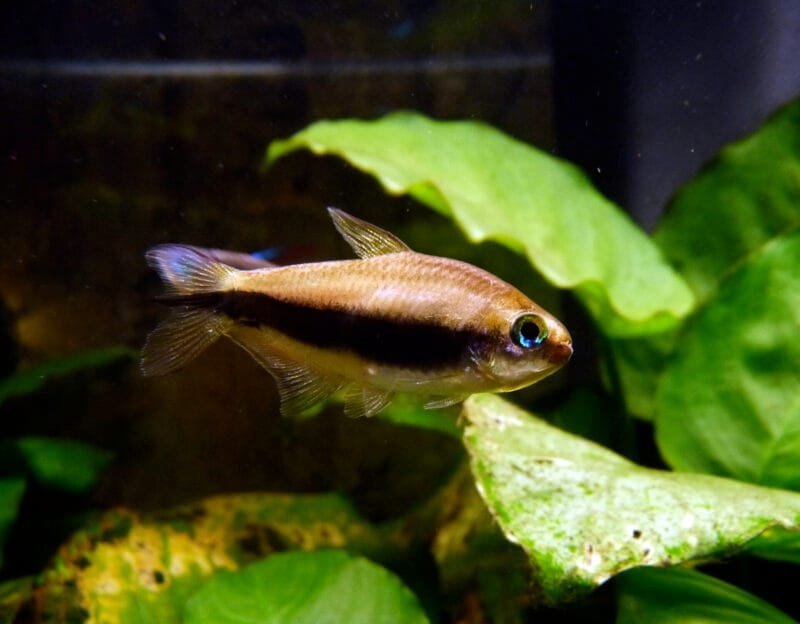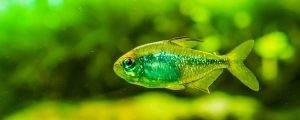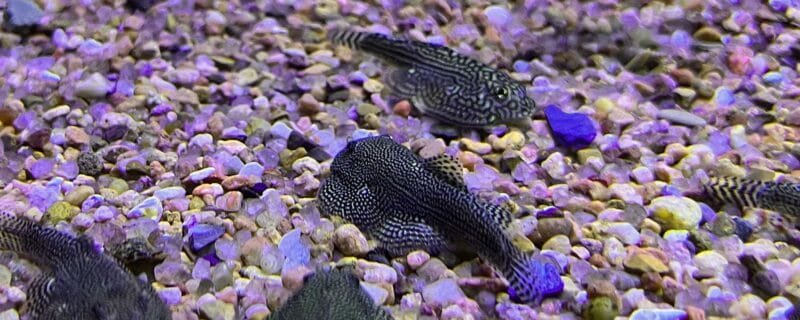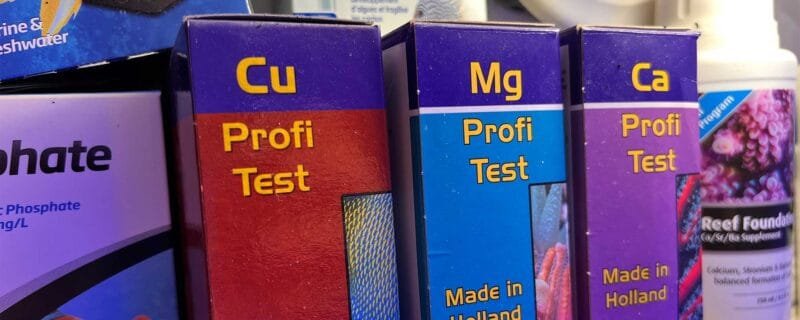Among the many fascinating freshwater species available in the aquarium trade, few are as intriguing—or as misunderstood—as the Bucktooth Tetra (Exodon paradoxus). With its brilliant coloration, sharp teeth, and bold schooling behavior, this species is unlike the peaceful tetras many aquarists are used to. Native to South America, the Bucktooth Tetra is both a challenge and a rewarding addition for advanced hobbyists willing to give it the right environment.
This blog will explore everything you need to know about Exodon paradoxus—from its natural history to tank requirements, diet, breeding, and even variations like the albino form.
Latin Name and Relatives
The scientific name of the Bucktooth Tetra is Exodon paradoxus, part of the family Characidae, which also includes other well-known tetras such as the Neon Tetra (Paracheirodon innesi) and the Emperor Tetra (Nematobrycon palmeri). Unlike these peaceful relatives, Exodon paradoxus belongs to a smaller, specialized group known for their sharp teeth and aggressive tendencies.
Its closest relatives are other predatory tetras within the subfamily Exodontinae, although Exodon paradoxus is the best-known and most widely available in the aquarium hobby.
Common Name
-
Bucktooth Tetra
-
Exodon Tetra
The name “Bucktooth” comes from its noticeable sharp teeth, which it uses for feeding and aggressive displays.
Native Habitat
Bucktooth Tetras are native to the Amazon River basin in South America, particularly in Brazil and Guyana. They inhabit fast-flowing rivers, streams, and flooded forest regions, where they school in large numbers. Their natural waters are soft, slightly acidic, and rich in leaf litter, which helps tint the water and provide shelter.
Size
Adult Bucktooth Tetras reach around 5 to 6 inches (12–15 cm) in length, making them one of the larger tetra species. Because of this size, they require a larger aquarium compared to smaller community tetras.
Diet
In the wild, Bucktooth Tetras are opportunistic carnivores, feeding on insects, crustaceans, scales, and even fins of other fish. In captivity, they adapt well to a high-protein diet, including:
-
Frozen or live foods (bloodworms, brine shrimp, krill, daphnia)
-
Quality carnivore pellets or flakes
-
Occasional treats of chopped fish or shrimp
They should not be fed only dry foods—variety is essential for their health and natural behavior.
Sexing
Sexing Bucktooth Tetras is difficult because the differences are subtle:
-
Males tend to be slightly slimmer and may display more intense coloration during breeding conditions.
-
Females are usually fuller-bodied, especially when carrying eggs.
For most aquarists, determining sex is only reliably possible during spawning periods.
Breeding
Breeding Bucktooth Tetras in captivity is challenging but possible:
-
They are egg scatterers, releasing eggs among fine plants or spawning mops.
-
No parental care is given—adults will readily eat the eggs.
-
To breed them, a separate spawning tank with a mesh or marbles at the bottom is required to protect the eggs.
-
Water conditions should be soft (2–6 dGH), slightly acidic (pH 6.0–6.5), and warm (around 80°F / 27°C).
-
Fry require infusoria or liquid fry food at first, followed by freshly hatched brine shrimp.
Due to their aggression and size, successful breeding is rare in home aquariums, but experienced aquarists have managed it.
Community Tank Suitability
Unlike many tetras, Exodon paradoxus is not suited for peaceful community aquariums. They are aggressive, known for nipping scales and fins from other fish. However, they can thrive in:
-
Species-only tanks
-
Very large tanks with large, robust tank mates (e.g., larger cichlids, armored catfish)
The best approach is to keep them in large schools of 12 or more, which helps spread aggression and encourages natural shoaling behavior.
Water Conditions
To mimic their natural habitat, Bucktooth Tetras prefer:
-
Temperature: 74–82°F (23–28°C)
-
pH: 5.5–7.5 (slightly acidic is best)
-
Hardness: Soft to moderately hard (2–12 dGH)
-
Tank Size: Minimum 55 gallons for a school, ideally 75+ gallons
Plenty of swimming space, dim lighting, and a secure lid (they may jump) are necessary.
Ease of Care
Bucktooth Tetras are rated moderate to difficult in terms of care. They require:
-
A large tank
-
High water quality with strong filtration
-
A carefully managed community to avoid aggression issues
-
A varied, protein-rich diet
They are best suited to intermediate or advanced aquarists.
Tankmates
Good options for tankmates include:
-
Large cichlids (e.g., Severums, Geophagus, or Oscars in very large tanks)
-
Armored catfish (e.g., Plecostomus, Doradids)
-
Other robust, fast-moving species
Avoid small, delicate, or long-finned fish such as guppies, angelfish, or gouramis.
Species Variations
The most common variant is the standard Bucktooth Tetra. While selective breeding has not yet produced many color morphs, there is an albino form available in some markets.
Albino Bucktooth Tetra
The Albino Exodon paradoxus displays a pale, whitish-pink coloration with red eyes. Behavior, care, and aggression are identical to the standard form. Albino specimens are less common and may be more sensitive to bright light, requiring more shaded aquascaping.
FAQs about Bucktooth Tetras
1. Are Bucktooth Tetras really aggressive?
Yes, they are aggressive compared to most tetras. They are known for nipping scales and fins, which is why they are unsuitable for peaceful community tanks. However, in large groups, aggression is mostly directed within the school.
2. How many Bucktooth Tetras should I keep?
They should be kept in groups of at least 12 individuals. Smaller groups will result in heightened aggression and stress.
3. Can Bucktooth Tetras be bred in a home aquarium?
Yes, but it is difficult. They scatter eggs with no parental care, requiring a separate breeding setup with protective substrate. Most aquarists purchase them rather than breed them.
Conclusion
The Bucktooth Tetra (Exodon paradoxus) is a unique, striking fish that stands apart from its more peaceful relatives. With sharp teeth, bold schooling behavior, and vibrant coloration, they are a true showpiece species for advanced aquarists. While not suitable for community aquariums, a dedicated species tank or carefully planned large setup can bring out their fascinating natural behaviors. For those willing to meet their needs, Bucktooth Tetras offer a challenging but rewarding experience in freshwater fishkeeping.






